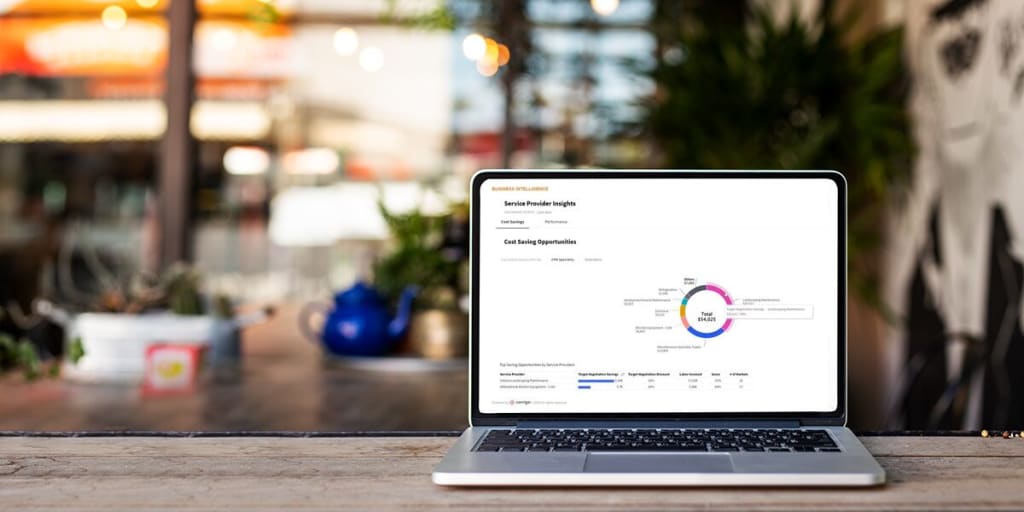
8 ways business intelligence improves restaurant facilities management
To ensure uptime and uninterrupted revenue streams, restaurant facilities management (FM) teams rely on operational data. While the data may be recent, it’s also backward-looking.
FM business intelligence (BI) is forward-looking. BI algorithms connect thousands of data points and generate insights and prescriptive recommendations that include schedules for replacing aging equipment well into the future.
BI enables FM teams to be more prepared and less reactive. In addition to identifying assets ready for replacement, BI also identifies assets not yet on preventive maintenance (PM) schedules, which is essential in the restaurant industry where kitchen equipment gets heavy use.
Business intelligence drives FM efficiency for restaurants
FM efficiency means time- and cost-savings and greater productivity (e.g., processing more work orders). Here are eight ways business intelligence drives efficiency for restaurant FM teams.
1. Performance
Restaurant repairs and maintenance are handled by internal technicians, third-party service providers, or both. BI operational insights use scoring metrics to compare the performance of technicians against that of providers, allowing facilities managers to optimize the allocation of maintenance resources between techs and providers for higher operational performance.
2. Preventive maintenance
Because high temperatures from ovens, deep fryers, and warming lights shorten the useful life of all kitchen equipment, preventive maintenance mitigates wear and tear and delays equipment replacement. Reactive repairs, on the other hand, jeopardize budgets, customer experience, and uptime.
3. Prescriptive recommendations
BI crunches mountains of data to generate prescriptive recommendations for faster, more informed FM decisions about restaurant assets, providers, and workflows. Recommendations for placing expensive equipment on PM schedules, for example, leads to mid- and long-term savings and conforms to FM best practices.
4. Ranking alternate service providers
BI dashboards give restaurant FM teams high-level and detailed views of their service providers. Drilling down into a current provider displays competing providers in the market and ranks them as low-, medium-, and high-value replacements based on a BI algorithm. Facilities managers can and should consider switching to high-ranking competitors to capture cost savings.
5. Renegotiating rates with service providers
Not all underperforming service providers need to be replaced. Prescriptive recommendations also include targeted discounts for renegotiating labor rates with existing providers in order to capture projected cost-savings. Changing the provider relationship, either through renegotiation or replacement, generates near-immediate savings, often at the time of the next invoice.
6. Preparation
Forward-looking FM relies on business intelligence to pinpoint when kitchen equipment should be replaced in the years ahead. Preventive maintenance is another tactic for preparedness because equipment, like reach-in and walk-in freezers, dishwashers, and ovens, are simply more reliable when they’re regularly maintained. Preparation is the single most important strategy for guaranteeing uptime and continuous restaurant revenue streams.
7. Operational data
Restaurant facilities managers use BI-generated operational insights to shed light on the internal performance of their FM portfolios. Operational insights give deep visibility into the performance of the entire FM footprint and identify, for example, installations with the highest maintenance costs.
BI metrics for work order completion times and invoice turnarounds identify workflow inefficiencies that create bottlenecks. Removing these bottlenecks cuts costs, saves time, maintains budgets, and boosts FM restaurant performance. Facility managers can even see the ratio of PM work orders to reactive work orders and make appropriate changes.
8. Providing essential data
Business intelligence recognizes when it doesn’t have enough data for analytics and reporting. BI can prompt FM teams to supply missing data needed by the algorithms for calculating equipment replacement schedules, for example. For convenience, dashboards provide links into FM software where missing data can be added.
Learns more about FM business intelligence
Download our new e-book, “The Facility Manager’s Guide to Business Intelligence,” to discover how BI delivers time- and cost-savings along with gains in operational efficiency.
To learn more about Corrigo, JLLT’s industry-leading FM software, talk to a Corrigo expert today.